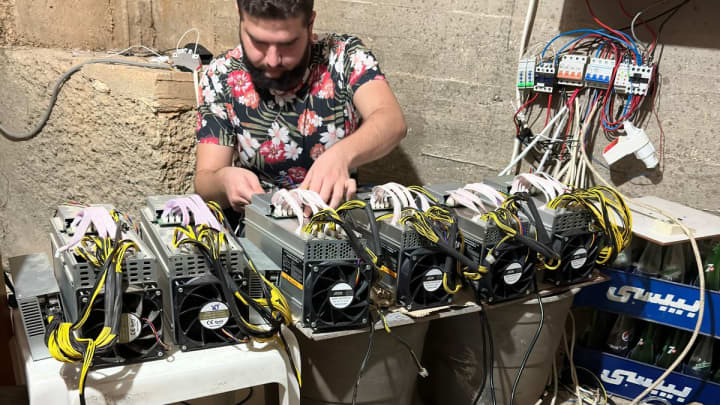Introduction
The rise of cryptocurrencies has transformed how people perceive money, investment, and digital finance. Behind the scenes, however, there is a powerful driving force enabling these decentralized networks to run smoothly — the mining machine. These machines are responsible for solving cryptographic puzzles, validating transactions, and ensuring the security of blockchains like Bitcoin and Ethereum. Whether you’re an enthusiast or an investor exploring mining opportunities, understanding how a mining machine works is crucial.
What is a Mining Machine?
A mining machine is specialized hardware designed to perform the complex computations required in cryptocurrency mining. While early miners relied on standard computers, the increasing difficulty of mining has led to the development of more advanced devices, such as GPU rigs and ASIC miners. These machines compete to solve mathematical puzzles, and the first to do so gets to validate the block and earn a reward in cryptocurrency.
Evolution of Mining Machines
- CPU Mining – In the early days of Bitcoin, simple desktop CPUs were enough to mine effectively.
- GPU Mining – As the network grew, Graphics Processing Units became popular due to their superior parallel processing capabilities.
- FPGA Mining – Field Programmable Gate Arrays offered more efficiency than GPUs but required technical expertise.
- ASIC Mining Machines – Application-Specific Integrated Circuits dominate today’s mining world, offering unmatched performance for specific coins like Bitcoin.
Types of Mining Machines
1. GPU Mining Machines
These use multiple high-end graphics cards connected to a system. They are flexible, capable of mining various coins such as Ethereum, Ravencoin, and Ergo.
2. ASIC Mining Machines
ASICs are purpose-built mining devices designed to mine a specific algorithm, such as SHA-256 (Bitcoin) or Scrypt (Litecoin). They deliver the highest efficiency and are widely used in professional mining farms.
3. Portable Mining Machines
Some companies now manufacture compact, low-energy mining devices for hobbyists and small-scale miners. While not as powerful as ASICs, they’re affordable and easier to manage.
4. Cloud-Based Mining
Though not a physical mining machine, cloud mining allows users to rent computational power from large-scale farms, bypassing the need to buy hardware.
How a Mining Machine Works
The process is simple yet resource-intensive:
- Step 1: Verification – The mining machine collects pending transactions from the blockchain’s mempool.
- Step 2: Hashing – It performs complex mathematical calculations (hashing) to solve the cryptographic puzzle.
- Step 3: Block Addition – Once solved, the block is added to the blockchain, making the transaction permanent.
- Step 4: Reward – The miner receives cryptocurrency rewards (block reward + transaction fees).
Benefits of Using a Mining Machine
- Earning Rewards – Mining machines provide a direct way to earn cryptocurrency.
- Network Security – By validating transactions, miners strengthen blockchain security.
- Decentralization – Mining ensures that no single entity controls the blockchain.
- Investment Opportunity – Mining hardware itself can become a valuable asset as crypto demand grows.
Challenges with Mining Machines
Despite their potential, mining machines face obstacles such as:
- High Power Consumption – ASIC miners consume large amounts of electricity, raising energy bills.
- Initial Costs – Professional mining machines can cost thousands of dollars.
- Heat & Noise – Mining rigs generate significant heat and noise, requiring cooling systems.
- Regulations – Governments in some regions impose restrictions due to environmental concerns.
The Future of Mining Machines
As the crypto market matures, mining machines are also evolving. Some trends include:
- Energy Efficiency – Newer ASICs are being designed to consume less power per hash.
- Green Mining – Integration of renewable energy like solar and hydro power in mining farms.
- Decentralized Mining Pools – Allowing smaller miners with weaker machines to collaborate and compete with large-scale farms.
- AI Integration – Artificial Intelligence may soon optimize mining performance and energy use.
Tips for Choosing the Right Mining Machine
- Define Your Goal – Are you mining as a hobby, for profit, or for blockchain support?
- Consider the Coin – ASICs are best for Bitcoin, while GPUs suit altcoins.
- Check Hashrate – The higher the hashrate, the faster the machine solves puzzles.
- Energy Efficiency – Look for machines with a strong balance between power consumption and performance.
- Budget Planning – Factor in not just machine cost, but also electricity, cooling, and maintenance.
Conclusion
A mining machine is more than just hardware — it’s the backbone of blockchain security and decentralization. From early CPUs to advanced ASICs, mining machines have evolved to meet the increasing demands of cryptocurrency networks. While they come with challenges like high energy consumption and costs, they remain essential for ensuring that blockchains like Bitcoin operate securely and efficiently.
For anyone interested in entering the world of crypto, understanding and investing in the right mining machine could be the first step toward becoming part of the digital revolution.





